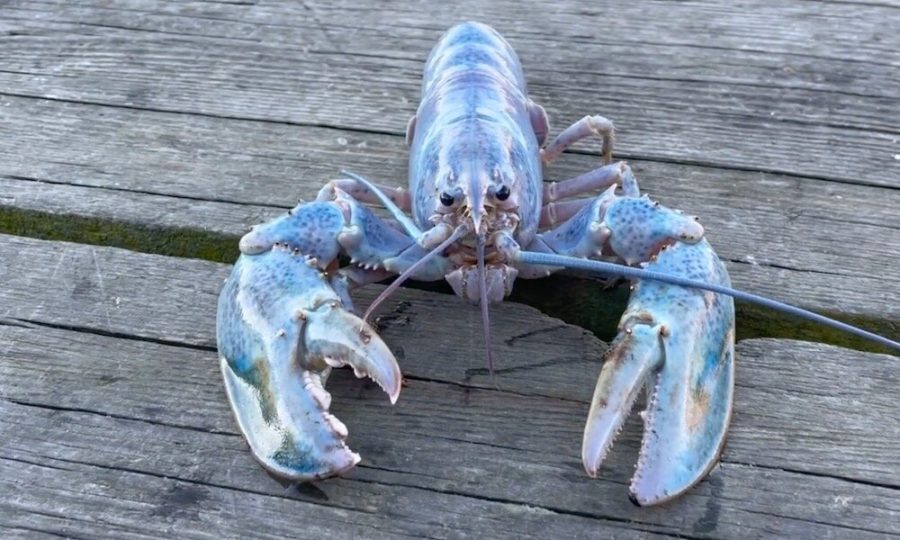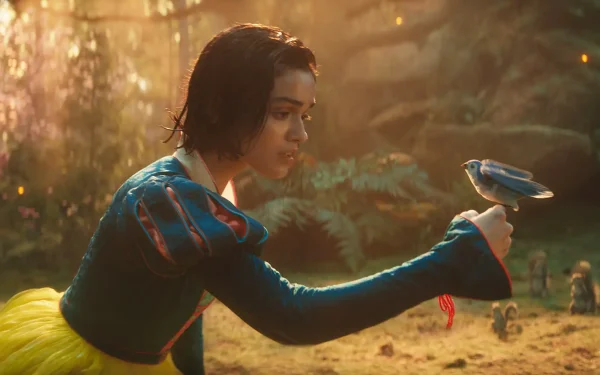Fisherman Catches Rare ‘Cotton Candy’ Lobster
Recently in Maine, lobsterman Bill Coppersmith caught a 1-in-100 million ‘cotton candy’ lobster. The lobster’s mystical appearance holds a cotton-candy-like blue color with shiny specks of pinks, aquas, and purples. “It’s so cool that Mother Nature produced a lobster like this. Her shell…it’s beautiful,” Coppersmith explained.
“Hey, look at this, you guys!” the lobsterman exclaimed as he reeled in a trap with a small speck of bright blue hidden between the other lobsters. At first, he had thought it might have been “a piece of plastic or a toy,” says The Washington Post, but Bill Coppersmith had caught the rare lobster during a routine lobster-catching trip in Casco Bay, Maine. Coppersmith immediately texted a picture to Mark Murrell, CEO of the seafood company Get Maine Lobster, to which he is a contract fisherman for. Coppersmith was astonished as he found out that he had indeed captured a cotton candy lobster. “Bill and his crew were extremely excited,” said Murrell. The lobsterman decided to name the mystical specimen “Haddie”, after his granddaughter who is turning nine soon.
The cotton candy lobster gets its unique color from “proteins grab[ing] hold of [it’s] astaxanthin,” a red pigment seen in lobsters, “and contort[ing] the molecule so much that the twisted version absorbs and reflects different wavelengths of light,” Live Science explains. If certain proteins bind to the astaxanthin, it can easily turn it blue. The change in coloration is rare, but not impossible. Some causes might be “unusually low astaxanthin levels, due to a diet…[of] mostly…bait fish, rather than the typical lobster diet of astaxanthin-rich crab and shrimp.” Another possibility can be a genetic occurrence that “alters the proteins that bind to the pigment, thus changing its apparent color.” Nonetheless, this seemingly cool alteration in color is potentially dangerous for the lobster. To avoid predators, lobsters usually camouflage into the ocean floor. The cotton candy lobster’s bright blue pigmentation can make it difficult to blend into its surroundings. “It’s possible that the exquisite shellfish…was lured out of hiding because a stormy few days made the waters murky, and she felt safer from predators,” Coppersmith said in Live Science.
Haddie is now being kept at the Seacoast Science Center in Rye, New Hampshire. “This is a beautiful lobster, and we want to preserve it,” Murrell said in Live Science. The company never had intentions to make the lobster seafood, but instead preferred to find a safe permanent home for her. At Seacoast, it is guaranteed that Haddie will live happily and safely. “She will have plenty of room to crawl around on a sandy floor and hide in caves, and could easily live another decade or more,” Robert Royer, senior aquarist for the seaside institution at Odiorne Point State Park said. Currently, Haddie is planned to be displayed in a new lobster exhibit that is expected to be premiering in the spring of 2022.






